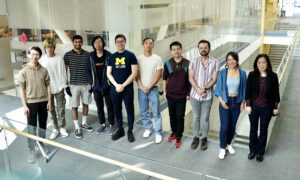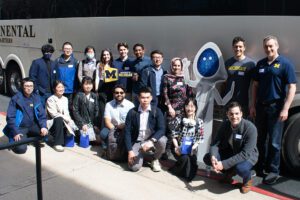Quantum information science and engineering is one of the hottest fields in engineering – and ECE wants to make it accessible to everyone.


Quantum information science and engineering is one of the hottest fields in engineering – and ECE wants to make it accessible to everyone.

Under Robinson’s leadership, the James Webb Space Telescope project went from being years behind schedule and billions over-budget to one of NASA’s greatest achievements of the 21st century.

Alum Eli Neumann, the Senior Vice President of Worldwide Sales Engineers, co-designed the Center for Entrepreneurship course.

The challenge is a means of pushing forward with their research into development of next-generation embodied AI agents.

PhD students Joshua Brooks, Xavier Farrell, and Madeline Miller are part of an NSF Smart and Connected Communities project that partners with local Detroit organizations to reduce household energy insecurity.

Students networked with alums, tested demos of new technology, and toured labs at HPE, NASA, Ambiq, Dell, Torc Robotics, and NI.
Sustainable fuels, democratized programming tools, and Internet censorship countermeasures are a few of the projects’ broad potential impacts.
The post High number of NSF CAREER awards, with more still under review appeared first on Michigan Engineering News.

Long aims to ensure that the information received from sensing devices is both trustworthy and confidential.

Aditya is creating high-resolution, accessible, scalable, and portable imaging radars that are 200x cheaper and 100x smaller than what is currently available.

Navid is exploiting III-Nitride nanostructures for artificial photosynthesis and next generation nanoscale optoelectronics.